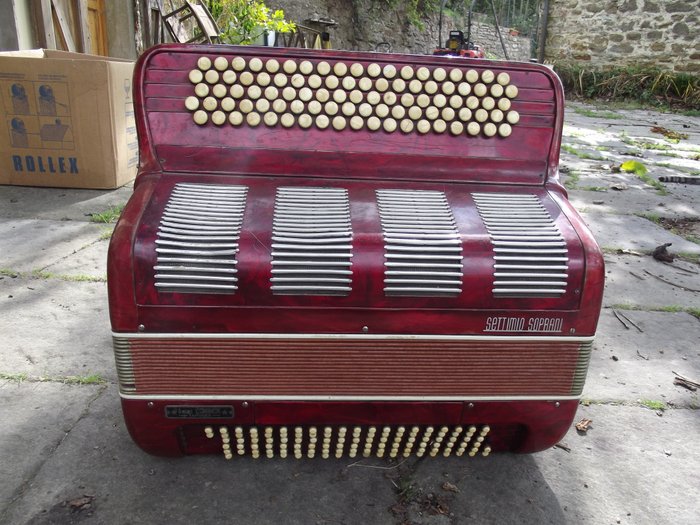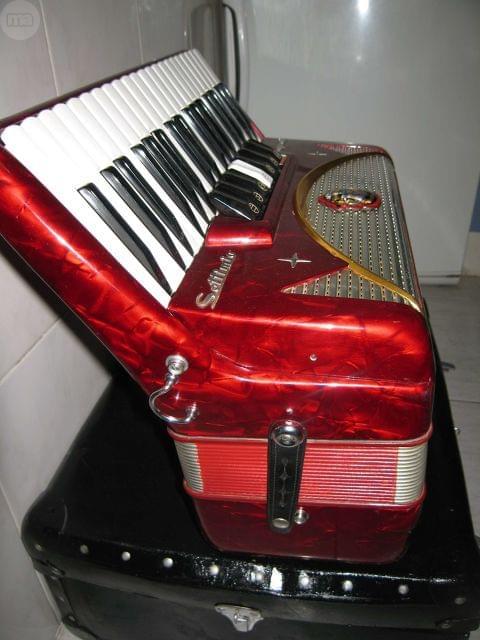



His 1844 patent for what he called a “concertina” also featured the ability to easily tune the reeds from the outside with a simple tool. It took English inventor Charles Wheatstone to squeeze both chords and keyboard together in one squeezebox. The patent also described instruments with both bass and treble sections, although Demian preferred the bass-only instrument owing to its cost and weight advantages.Īfter Demian’s invention, other accordions appeared, some featuring only the righthanded keyboard for playing melodies. Demian’s patent thus covered an accompanying instrument: an accordion played with the left hand, opposite to the way that contemporary chromatic hand harmonicas were played, small and light enough for travelers to take with them and used to accompany singing. The diatonic key arrangement was also already in use on mouth-blown instruments.

At that time in Vienna, mouth harmonicas with Kanzellen (chambers) had already been available for many years, along with bigger instruments driven by hand bellows. His instrument also could sound two different chords with the same key one for each bellows direction (a bisonoric action). One key feature for which Demian sought the patent was the sounding of an entire chord by depressing one key. An instrument called accordion was first patented in 1829 by Cyrill Demian, of Armenian origin, in Vienna.ĭemian’s instrument bore little resemblance to modern instruments. It only had a left hand buttonboard, with the right hand simply operating the bellows.
Settimio soprani accordion history free#
The accordion is one of several European inventions of the early 19th century that used free reeds driven by a bellows. The sheng and khaen are both much older than the accordion and this type of reed did inspire the kind of free reeds in use in the accordion as we know it today. The accordion is a free reed instrument and is in the same family as other instruments such as the sheng (pictured right) and khaen. The airtightness of the bellows and of the valves that open and close the access of air into the reeds, consists of some hundreds of pieces built from a variety of materials, such as fir, maple, mahogany and walnut wood metals such as steel, hard aluminum and brass precious cashmere, felt and cloth, as well as lamb’s hide, kid and leather celluloid, rubber and virgin wax. The accordion, an instrument very close to the heart of generations of Italians, is a masterpiece of fine mechanics (the more familiar keyboard of a typewriter is nothing compared to the mechanism which works the bass and chord valves) and of fluid dynamics. The following three models are the most popular accordion types: on the “diatonic” model, the sound produced when the bellows are opened is different to that produced when they are closed the “chromatic” model allows the complete range of twelve sounds to be played (this model also has “buttons” on the right hand keyboard) the “piano” accordion has a right hand keyboard that is very similar to a piano keyboard, with black and white keys. The accordion’s sound is produced by the reed, a small metal plate on which a thin steel strip is mounted that oscillates with the movement of the air produced by the compression of the bellows. It consists of three different parts: the right hand keyboard for the melody, the bellows, and the left hand keyboard (or buttons) for the accompaniment. The Accordion (the Italian name “fisarmonica” is derived from the German word “Physharmonikaz,” a compound name coming from the Greek word “Physa” – bellows – and “Harmonikos” – harmonic) is a musical instrument operated by air pressure, belonging to the family of the aerophones.


 0 kommentar(er)
0 kommentar(er)
